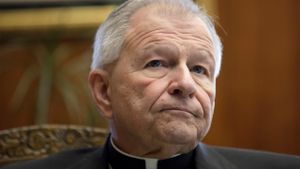Last week marked one of the most tragic periods in modern U.S. aviation history, with two catastrophic crashes resulting in the deaths of over 70 individuals. Aviation experts and investigators are now faced with the sobering task of piecing together the circumstances surrounding these tragedies, both of which have drawn significant media attention.
On Friday night, the first incident occurred when a small medical jet, Learjet 55, crashed shortly after takeoff from Philadelphia. This aircraft was carrying a young girl returning home to Mexico after completing treatment at Shriners Hospital. The crash not only claimed all six lives aboard but also resulted in damage to numerous parked cars and ignited fires across the area. Eyewitnesses reported seeing enormous billows of smoke rising from the wreckage of the plane and immediately following the incident, emergency personnel rushed to the scene to control the chaos.
Just days earlier, the skies over the Potomac River became the location of the deadliest aviation accident since November 2001 when an Army Blackhawk helicopter collided with an American Airlines regional jet. The American Airlines flight had 64 passengers and was approaching Reagan National Airport when it tragically crashed, leading to the loss of all on board, including three Army personnel from the helicopter. An investigation was rapidly launched to determine the factors contributing to the crash, which is now known to be influenced by serious discrepancies between altitude readings from the different aircraft involved.
Captain Richard J. Levy, an aviation analyst, remarked on this period of aviation safety, stating, "This week has shattered any semblance of safety we felt we had achieved as we made tremendous strides post-9/11." The crash of the medical jet followed soon after the midair collision, prompting outrage and concern over the safety protocols currently enforced within air traffic control.
Families of victims from the helicopter crash visited the site on Sunday, their grief palpable. Authorities confirmed they had recovered 55 of the 67 bodies, and divers continued the search for the remaining victims. Col. Francis B. Pera of the Army Corps noted, "Reuniting those lost in this tragic incident is really what keeps us all going." Investigative teams launched rigorous recovery efforts, with divers searching through the icy waters of the Potomac River.
Prior to the collision, communication problems within the Reagan Airport control tower, as reported by Transportation Secretary Sean Duffy, have sparked scrutiny. On the night of the crash, the control tower was understaffed and procedures were allegedly altered; typically, traffic duties would be divided between two different controllers. The data suggests the plane was cruising at approximately 325 feet, whereas the Blackhawk helicopter was reported at 200 feet, leading investigators to question the accuracy and reliability of these altitude readings.
Federal investigators are currently combing through wreckage and analyzing both flight recorders, hoping to reconcile the conflicting data. NTSB investigator Brice Banning commented, "This is a complex investigation. There are many pieces here." The cockpit voice recorder captured the final moments leading up to the disaster, including audible reactions from the flight crew just before impact.
Unanswered questions have continued to swirl around the tragic events. With the nation already united in grief, safety measures within the aviation sector, particularly concerning air traffic control and staffing issues, have come under intense scrutiny. "Staffing shortages for air traffic control have been major problems for years," Duffy remarked, emphasizing the urgent need for systemic change.
Social media platforms lit up with sentiments from the public spurred by the tragedies, highlighting calls for action and reforms aimed at preventing such future catastrophes. President Donald Trump shared his views, claiming on Truth Social, "The Army helicopter was flying higher than allowed." His remarks indicate possible political ramifications and discussions about accountability and regulations within air traffic management.
Despite the heart-wrenching circumstances, families of victims are resolute, seeking answers as they navigate the painful process of grief. Some have expressed anger toward the authorities for the perceived lapses during the tragic events, with NTSB member Todd Innman stating, "Families want answers, and we want to provide them with those answers." He added, "People are hurt; they’re just mad and angry. They’re just all hurt." The sentiment encapsulates the raw emotions felt by those affected by this tragedy.
With investigations expected to take time, aviation experts suggest regulation reviews are imperative to prevent future tragedies. The preliminary reviews are expected within 30 days, but the full NTSB investigations could extend over much longer, thoroughly assessing all circumstances surrounding these deadly incidents.
Reflecting on the week of sorrow, Captain Levy emphasizes the importance of aviation safety and adherence to procedures: "It’s our responsibility to assure we’re not overlooking important aspects during flight operations.” The industry now awaits the outcome of investigations as families mourn and the consequences ripple through regulatory channels.
Across the globe, the aviation community is urged to grasp the full extent of these incidents, reminding all of the fragility of safety standards, and the impact human errors could impose on countless lives. Last week's tragedies may have finally shaken the confidence of the public's perception of flight safety, prompting calls for greater oversight and stringent regulations to secure the future of safe air travel.



